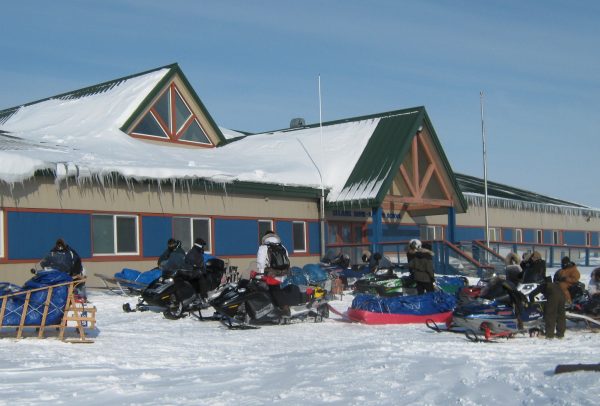
In the village of Selawik, about 90 miles east of Kotzebue, about a fourth of the homes have frozen water pipes. Temperatures are set to be 20 below or colder for the rest of the month in the small community, and local officials are working to make sure residents are maintaining their systems.
Selawik mayor Clyde Ramoth says frozen pipes are a chronic problem due to issues with the initial installation of the above-ground water system. The warming climate isn’t making things any easier.
“With the posts that were built years ago, with the climate change and warm summers, they’re tilting here left and right. The heavy plywood boxes are drooping,” Ramoth said. “Last summer, there was a lot of work to get those leveled.”
Ramoth says the sewer system, also above ground, has needed regular repairs too. He says the city is working on getting a grant from the Alaska Native Tribal Health Consortium to help with some of the system’s structural issues.
“We don’t have budget in our Selawik city budget to get additional manpower because funds are dwindling just from unexpected freeze ups,” Ramoth said. “And like I said, if we had those preventative measures, we probably wouldn’t run into this situation.”
Those preventative measures include regular maintenance from the city, as well as keeping residents informed about how to maintain their own water systems. Ramoth says villagers should check their heat tape regularly and always watch for leaks. He says he is constantly reminding locals to read their homeowner’s manual.
“We told people this morning when people walk in, we go on local VHF, we tell them on the phone… do what you can today man, because you just might save your home from freeze-up,” Ramoth said.
He says for a lot of villagers, struggles with heating don’t just stem from ignorance. It can also be a financial issue.
“People may think, they’ll weigh the cost of our AVEC [Alaska Village Electric Cooperative] bill, or do you want a nice hot shower and to wash and dry clothes,” Ramoth said. “So that’s something our locals have to think about.”
Ramoth says he’s hopeful that the money from ANTHC will help to solve some of the more chronic infrastructure problems that the city water system has had for years. In the meantime, he says locals have come up with some ingenious methods for keeping their pipes insulated.
“We have a lot of good folks that do their own thing like wrap the pipes with caribou skin, blanket, tarp and rope right near the box there. Do their own stuff with heaters,” Ramoth said. “The sooner the better is something we request on a daily basis.”
And Ramoth says if you don’t have caribou skin, moose hide works just as well.
Wesley Early covers Anchorage life and city politics for Alaska Public Media. Reach him at wearly@alaskapublic.org and follow him on X at @wesley_early. Read more about Wesley here.





